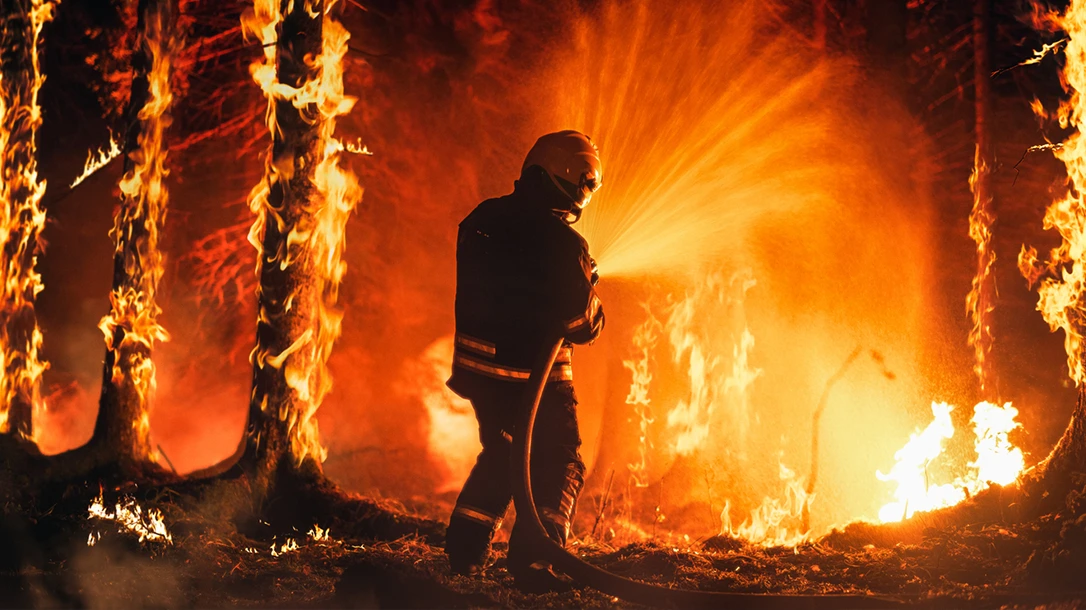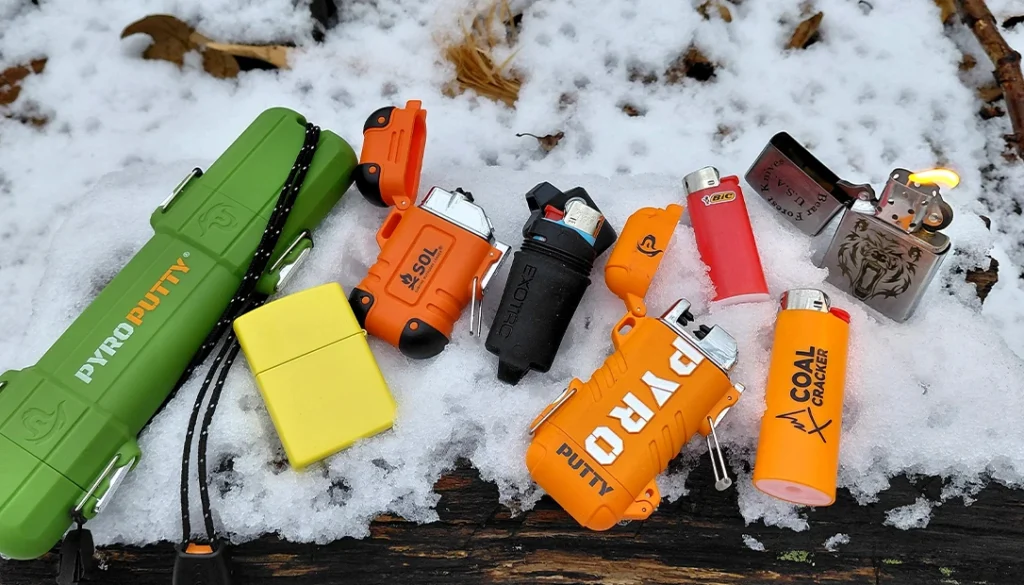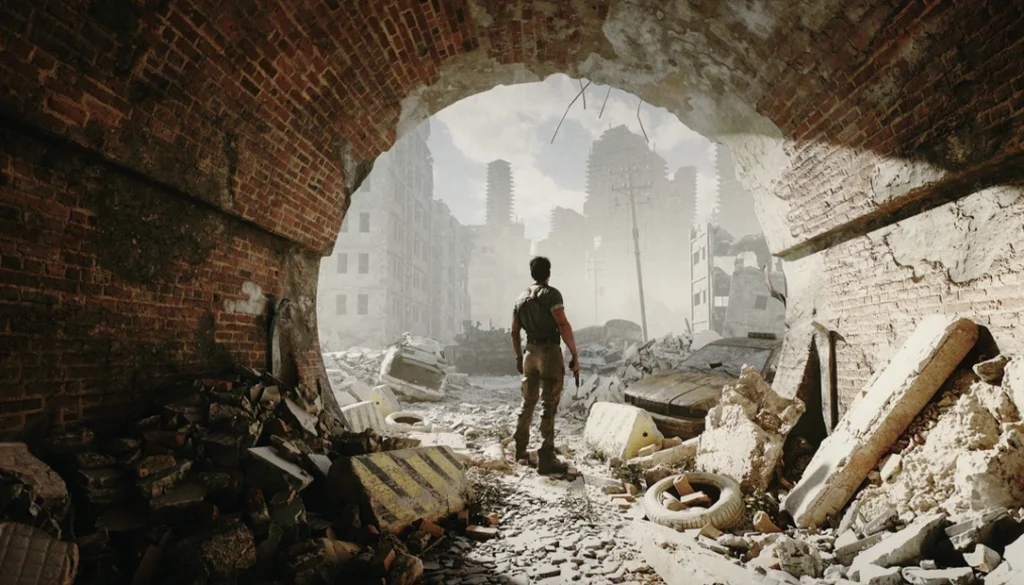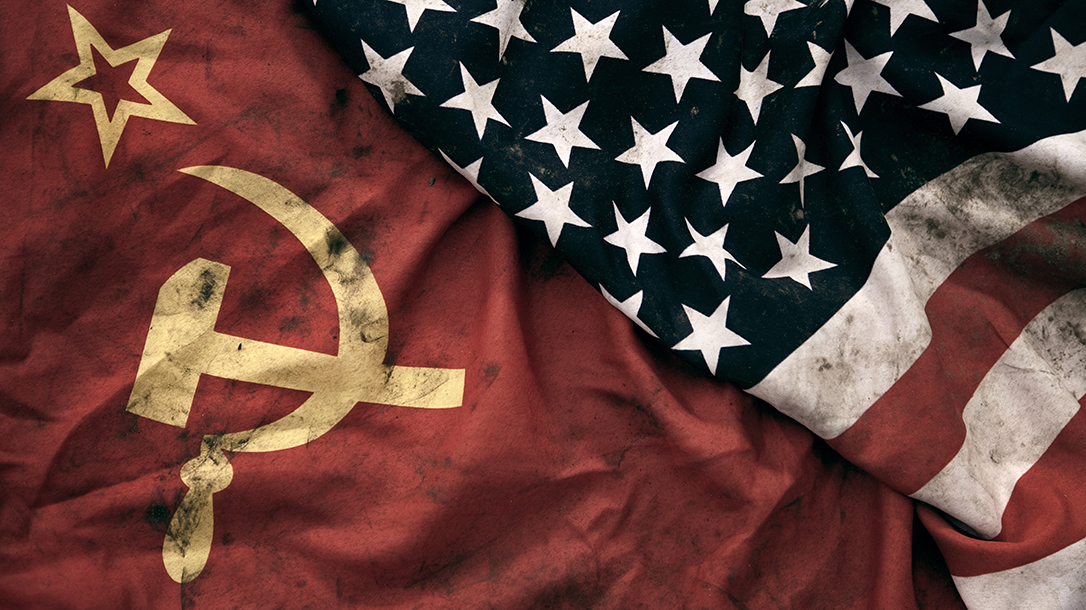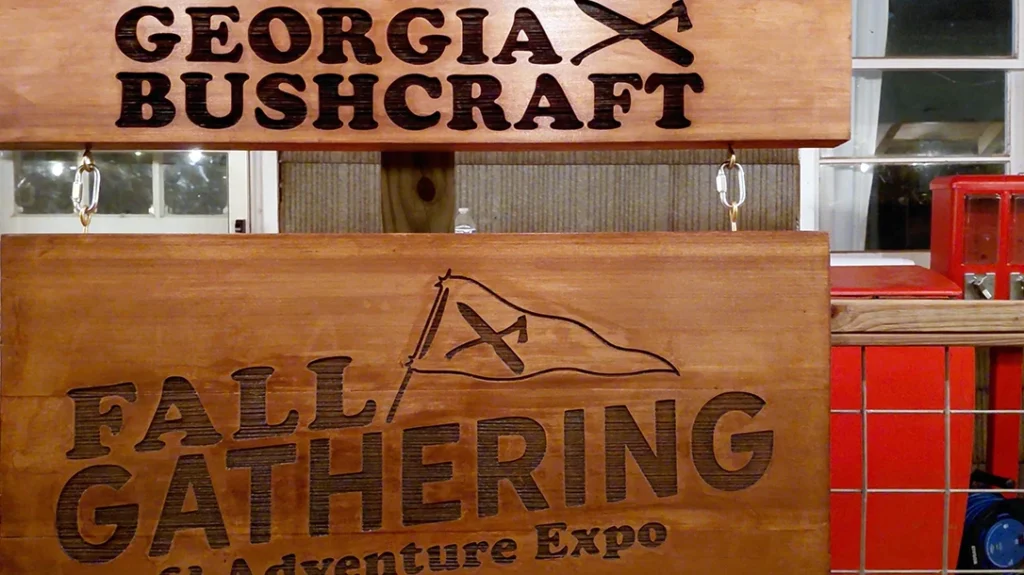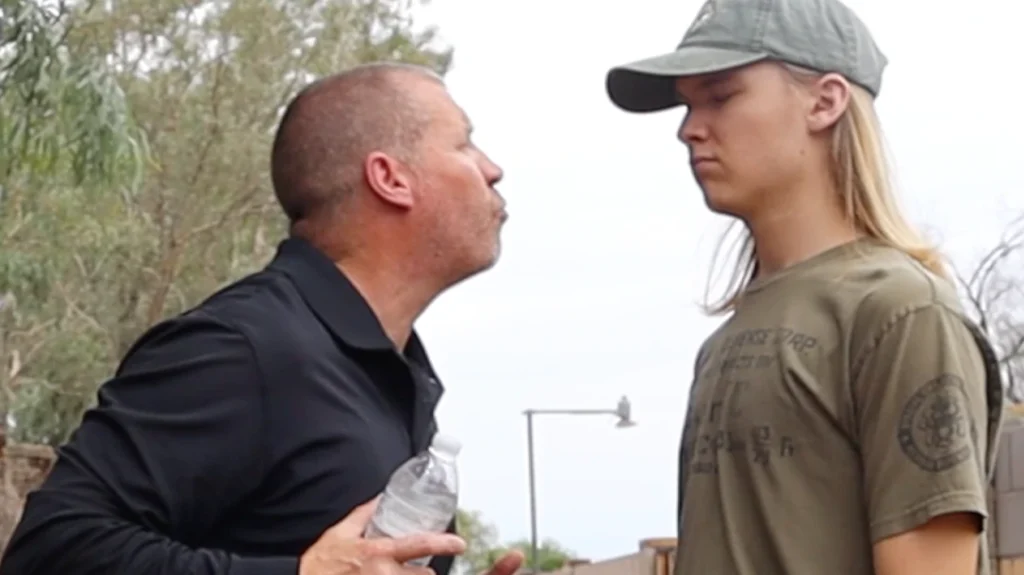The haze of smoke was disorienting and made me feel like the world might be coming to an end – at least my little piece of it. This was my family’s first evacuation since moving to Ruidoso, New Mexico, two years earlier. After leaving Dallas behind, we found a mountainside home surrounded by the pines of the Lincoln National Forest, just minutes from some great hiking trails.
But on that day in June 2024, my wife and I thought our dream was becoming a nightmare. Our area was one of the first to be evacuated as forest fires began ravaging parts of the Lincoln National Forest, and we fled to a friend’s home in the neighboring town of Alto. However, within hours, the smell of smoke and the sight of drifting ash seemed ominous.
Wildland Firefighters to the Rescue!
My family and the family we were staying with soon packed up and headed out – anywhere away from the fire. The entire villages of Ruidoso and Alto were evacuated. In my eyes, the prospect of the whole area burning seemed likely, and visions of Lahaina, Hawaii, and Paradise, California, seemed a real possibility as video and pictures from my town circulated.
Advertisement — Continue Reading Below
We were able to snag the last hotel room in a tiny town about 45 minutes away. Thankfully, my wife, two daughters, and I made it out safely, and we had already considered the prospect of our house not surviving the fires.
A week later, we were able to move back in. Somehow our house had been spared, but many others weren’t so fortunate. Much of the village survived, thanks to the amazing work of wildland firefighters who descended on the area. These selfless warriors have saved thousands of homes and continue to work around the country each fire season.
Not An Easy Job
The North American wildfire season typically runs from spring to fall, according to the Center of Disaster Philanthropy (CDP). However, that can vary as the residents of Eaton and Pacific Palisades, California, discovered in January. That fire burned 40,000 acres of land, with some estimates suggesting more than 9,000 structures were destroyed.
Advertisement — Continue Reading Below
Other areas around the world that have dealt with fires this year include Texas, Utah, Idaho, Alaska, New York, Mississippi, Nebraska, Oklahoma, South Dakota, New Jersey, and more. Fires have also ravaged other parts of the world as well, including Greece, the United Kingdom, Israel, South Korea, Japan, and more.
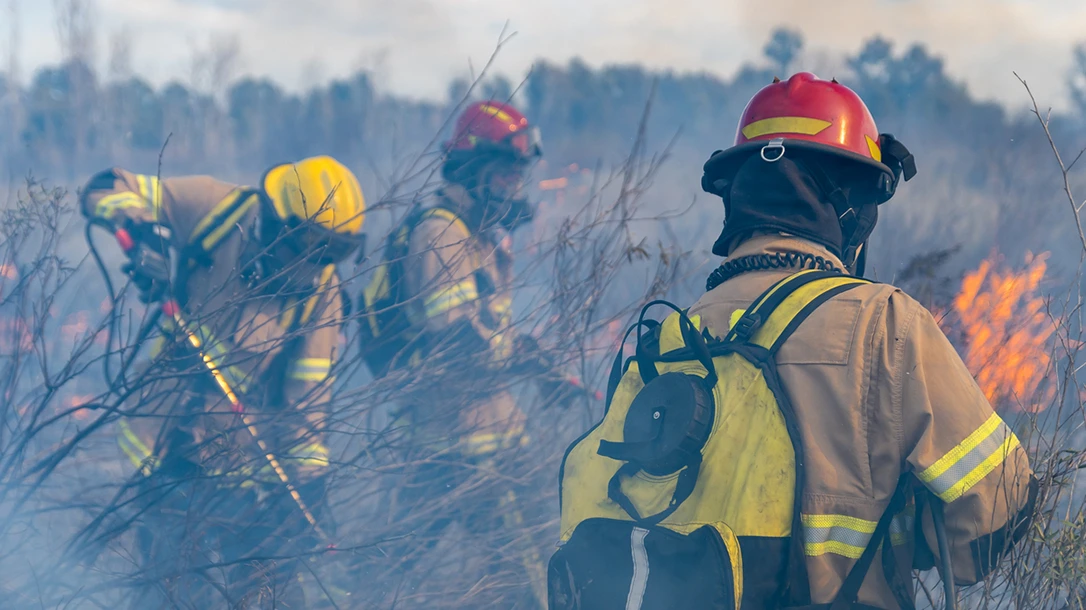
Wildland Firefighters
Also known as “hotshots,” they often do not receive the accolades they deserve. Beyond the danger, the conditions are harsh. Firefighters spend hours on the front line, directly fighting the blaze, creating firebreaks away from the fire’s edge to minimize its spread, and using aircraft to attack the fire from above.
Advertisement — Continue Reading Below
The efforts can be grueling with risks like smoke inhalation, physical injuries, sleep deprivation, and potentially long-term health concerns. While they may be working in areas that attract plenty of tourists, hotshots aren’t privy to a lovely B&B with a home-cooked meal – let alone a nice shower.
“Most of the time, hotshot crews just sleep in the dirt in the woods pretty close to the fire line,” Kelly Ramsey, author of the new book Wildfire Days: A Woman, a Hotshot Crew and the Burning American West, recently told WBUR. “We have a really simple setup of just a tarp and a sleeping bag on the ground, and there are fire camps that have showers, but we never really had the time. At the end of the shift, you’ve worked 16 hours, you go into camp, you grab your dinners, and you head back out to the woods.
“We never really had the time to use the showers, so you’re going 14 days without a shower, which would be gross even if you weren’t working in ash and dirt, but you are working in ash and dirt. You get really smelly, but you can’t even smell yourself because your nose is full of like these ash boogers.”
Advertisement — Continue Reading Below
Training and Using Modern Technology to Battle Blazes
While firefighting deaths have decreased over the past few years, the number of fatalities among wildland firefighters has increased due to the large amount of acreage burned. According to federal statistics, the country saw wildfires burn 1.8 million acres in 1993, and that number more than quadrupled by 2021. This can come with some real costs to the men and women who participate in this challenging and dangerous job.
“In 2024, we lost 11 firefighters across the United States, the fewest since 2019 (nine fatalities),” the Wildland Fire Lessons Learned Center reports. “Those people we lost include federal, state, and local firefighters, as well as three airtanker pilots in three separate aviation accidents. Of particular note, a federal agency (U.S. Fish and Wildlife Service) categorized a fatality from an occupational cancer as a line of duty death.”
Firefighting operations are conducted through several federal agencies, including the U.S. Department of Agriculture and the Department of the Interior, in concert with other state, tribal, and local officials. Some states also organize their own hotshot crews.
Advertisement — Continue Reading Below
Unsung Heroes
It’s a joint effort to save the country’s forests, and those looking to get in the field must undergo extensive training before heading off on a crew. That includes learning basic skills and safety procedures, depending on how someone wants to serve. Apprenticeship programs are also available to provide on-the-job learning.
The industry has also seen major advances in technology in recent years, including the use of thermal imaging, aircraft, drones, AI-powered sensors, and more to meet the growing demands of the job.
In 2021, American technology firm Nvidia partnered with Lockheed Martin, the U.S. Department of Agriculture, and the Colorado Division of Fire Prevention to develop “digital fires” to learn how these blazes work and potentially identify more effective suppression efforts. The groups are approaching forest fires in the same way that a defense contractor may help tackle wildfires.
Advertisement — Continue Reading Below
“The 21st century security technologies that we’re developing to respond to security threats are directly applicable to the complex environment of a wildland fire,” senior program manager at Lockheed Martin Artificial Intelligence Center Dan Lordan told the Los Angeles Times.
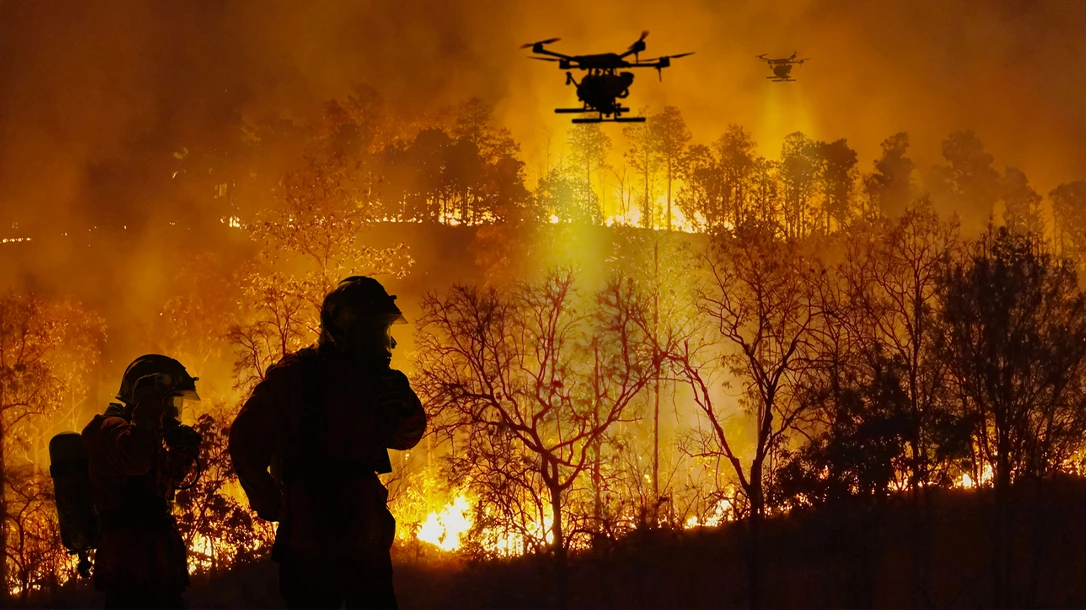
Battle Tested
Despite the use of technology, battling forest blazes still requires some boots on the ground. The consequences are many – succumbing to fire, exhaustion, mental fatigue, and ancillary injuries that can develop, and cognitive issues such as depression, generalized anxiety disorder, and post-traumatic stress disorder (PTSD).
Advertisement — Continue Reading Below
In May, a firefighter in Hartford, Pennsylvania, was killed from injuries sustained while battling a 30-acre brush fire. The 40-year veteran firefighter suffered a leg fracture during the fire and died from complications of the injury. The department noted of their lost comrade: “His dedication never faltered. His determination never tired. His will never waned.”
In November, an 18-year-old hotshot was killed while battling the Jennings Creek Fire, which destroyed 3,500 acres in New York and New Jersey. Dariel Vasquez died after a tree in a burned area fell on top of him.
Wildfire fighting saw a truly bizarre incident in June in Kootenai County, Idaho. Authorities said transient Wess Roley had been living in the area and started a wildfire, and then shot and killed two veteran firefighters when they responded. That’s certainly not the norm, but it highlights the dangers faced by these first responders when they hit the ground running to save homes, businesses, and wildlife.
Advertisement — Continue Reading Below
“Wildland firefighters do not enjoy the cultural prestige that structural firefighters do,” author Matthew Desmond notes in On the Fireline: Living and Dying with Wildland Firefighters. “They do not wax their fire engines and cruise down the local parade route, lights flashing; they are not the subject of countless popular books and movies; major politicians do not honor their sacrifices on the Senate floor or from the Rose Garden; they do not have bagpipe bands, fancy equipment, enduring icons, or other signifiers of honor verifying the importance of their activity.”
